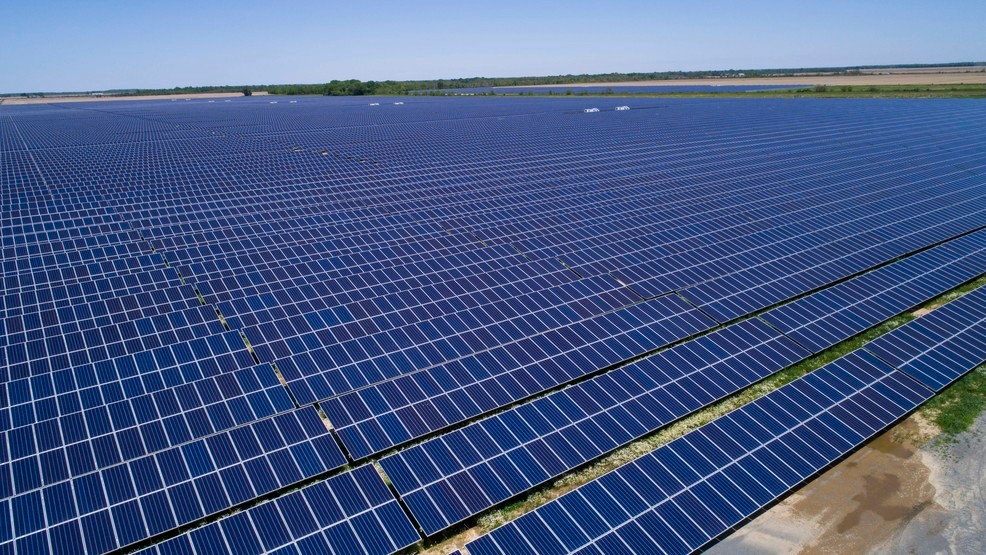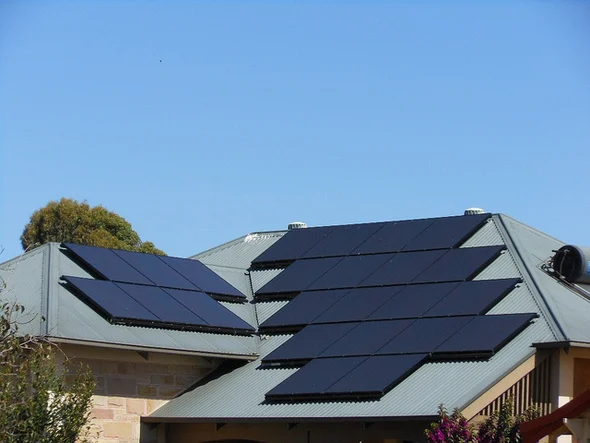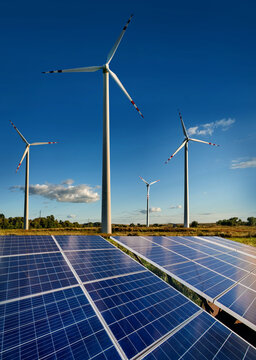
POWER SYSTEMS |
POWER SYSTEMS |
 |
|||||
|
HISTORY Early Years AC/DC War of the Currents Harnessing Niagara Solar Energy >>> Nuclear Energy
|
|
Solar Energy Though solar energy has found a dynamic and established role in today’s clean energy economy, there’s a long history behind photovoltaics (PV) that brought the concept of solar energy to fruition. With the way the cost of solar has plummeted in the past decade, it’s easy to forget that going solar had a completely different meaning even just 15 years ago. Let’s go back a few centuries to the origins of solar PV and explore the history of solar energy and silicon solar technology. In theory, solar energy was used by humans as early as 7th century B.C. when history tells us that humans used sunlight to light fires with magnifying glass materials. Later, in 3rd century B.C., the Greeks and Romans were known to harness solar power with mirrors to light torches for religious ceremonies. These mirrors became a normalized tool referred to as “burning mirrors.” Chinese civilization documented the use of mirrors for the same purpose later in 20 A.D. Another early use for solar energy that is still popular today was the concept of “sunrooms” in buildings. These sunrooms used massive windows to direct sunlight into one concentrated area. Some of the iconic Roman bathhouses, typically those situated on the south-facing side of buildings, were sunrooms. Later in the 1200s A.D., ancestors to the Pueblo Native Americans known as the Anasazi situated themselves in south-facing abodes on cliffs to capture the sun’s warmth during cold winter months. In the late 1700s and 1800s, researchers and scientists had success using sunlight to power ovens for long voyages. They also harnessed the power of the sun to produce solar-powered steamboats. Ultimately, it’s clear that even thousands of years before the era of solar panels, the concept of manipulating the power of the sun was a common practice. 
1800’s: Light and Electricity In the first chapter of solar history was the discovery that light was related to electricity. The first solar cells or (photocells) did not produce much power and used an element called selenium (Se). They were often used as light sensors for cameras or other electronic eye applications since they could only convert a mere 0.5% of the sun’s energy into electricity. In 1839, Alexandre Edmond Becquerel opened the door to solar energy, showing a strong relationship between light and electricity. In 1873, Willoughby Smith accidentally discovered photoconductivity in Selenium. Shortly thereafter, William Grylls Adams and his student Richard Day discovered that when Selenium (Se) was exposed to light, it produced electricity. While it wasn’t perfect, it was the first step towards the energy revolution — proving that sunlight itself could be converted into usable electricity. In 1887, Heinrich Hertz observed the photoelectric effect and the production and reception of electromagnetic waves, also known as the Hertz effect. This lead to more research by researchers like Hallwachs, Hoor, Righi, and Stoletow. From 1888-1891, Aleksandr Stoletov found a way to measure the relationship between the intensity of light, and the electric current it generated, based on Heinrich Hertz’s discoveries. 1900’s: Quantum Mechanics When Einstein and Millikan related light energy to movement at a quantum level, this paved the way for future solar research (and quantum mechanics). In 1902, Lenard observed that the energy of individual electrons increased with the frequency of light. In 1905, Albert Einstein published a paper taking the hypothesis that light energy was at a quantum level and making it into a formula. This is the fundamental theory that has driven the solar energy revolution and quantum mechanics. *Einstein was awarded the Nobel Prize in 1921 for “his discovery of the law of the photoelectric effect” In 1914, Robert Millikan’s experiments supported Einstein’s model of the photoelectric effect. *Millikan was awarded the Nobel Prize in 1923 for “his work on the elementary charge of electricity and on the photoelectric effect” In 1946, Russel Ohl patented the modern junction semiconductor solar cell. In 1947, Passive solar buildings in the United States were in such demand, as a result of scarce energy during the prolonged W.W.II, that Libbey-Owens-Ford Glass Company published a book entitled Your Solar House, which profiled forty-nine of the nation’s greatest solar architects. 1950’s: The Space Race Soon after the discovery of the transistor, the modern solar cell —the solar battery— was announced to the world in 1954 with an efficiency of 6%. This new iteration was based on mono-crystalline Silicon (Si). These were commercially produced and applied to space exploration missions, which drove the development of higher efficiencies in solar cells during the space race. In 1953, Dr. Dan Trivich, Wayne State University, makes the first theoretical calculations of the efficiencies of various materials of different band gap widths based on the spectrum of the sun. In 1954, the first photovoltaic cell was publicly presented at Bell Laboratories by Calvin Souther Fuller, Daryl Chapin, and Gerald Pearson. Bell Telephone Laboratories produced a silicon solar cell with 4% efficiency and later achieved 11% efficiency. In 1958, solar cells were applied to the Vanguard satellite as an alternative to a battery. In 1959, the US launched Explorer 6 launched with wing-shaped solar arrays consisting of Hoffman solar cells. In 1960, Hoffman Electronics achieves 14% efficient photovoltaic cells. By 1960, solar cells were the main power source for orbiting satellites and probes. In 1963, Japan installs a 242-watt, photovoltaic array on a lighthouse, the world’s largest array at that time. In 1969, The Odeillo solar furnace, located in Odeillo, France was constructed. This featured an 8-story parabolic mirror. In 1973, Elliot Berman founded Solar Power Corporation, a subsidiary of Exxon, and made huge strides in the cost of solar cell production. In 1973, The University of Delaware builds “Solar One,” one of the world’s first photovoltaic (PV) powered residences. The system is a PV/thermal hybrid. The roof-integrated arrays fed surplus power through a special meter to the utility during the day and purchased power from the utility at night. In addition to electricity, the arrays acted as flat-plate thermal collectors, with fans blowing the warm air from over the array to phase-change heat-storage bins. In 1976, David Carlson and Christopher Wronski, RCA Laboratories, fabricate first amorphous silicon photovoltaic cells. In 1977, total photovoltaic manufacturing production exceeds 500 kilowatts. In 1981, Paul MacCready builds the first solar-powered aircraft—the Solar Challenger—and flies it from France to England across the English Channel. The aircraft had over 16,000 solar cells mounted on its wings, which produced 3,000 watts of power. In 1982, the first, photovoltaic megawatt-scale power station goes on-line in Hisperia, California. It has a 1-megawatt capacity system, developed by ARCO Solar, with modules on 108 dual-axis trackers. In 1982, Australian Hans Tholstrup drives the first solar-powered car—the Quiet Achiever—almost 2,800 miles between Sydney and Perth in 20 days—10 days faster than the first gasoline-powered car to do so. In 1982, the U.S. Department of Energy, along with an industry consortium, begins operating Solar One, a 10-megawatt central-receiver demonstration project. The project established the feasibility of power-tower systems, a solar-thermal electric or concentrating solar power technology. In 1985, the University of South Wales breaks the 20% efficiency barrier for silicon solar cells under 1-sun conditions. In 1986, the world’s largest solar thermal facility, located in Kramer Junction, California, was commissioned. The solar field contained rows of mirrors that concentrated the sun’s energy onto a system of pipes circulating a heat transfer fluid. The heat transfer fluid was used to produce steam, which powered a conventional turbine to generate electricity. In 1993, Pacific Gas & Electric completes installation of the first grid-supported photovoltaic system in Kerman, California. The 500-kilowatt system was the first “distributed power” effort. In 1994, the National Renewable Energy Laboratory develops a solar cell—made from gallium indium phosphide and gallium arsenide—that becomes the first one to exceed 30% conversion efficiency. In 1999, Spectrolab, Inc. and the National Renewable Energy Laboratory develop a photovoltaic solar cell that converts 32.3 percent of the sunlight that hits it into electricity. The high conversion efficiency was achieved by combining three layers of photovoltaic materials into a single solar cell 2000’s: Improvement In recent years, research has moved towards designing lightweight, flexible, and highly efficient solar cells. Manufacturers have added strength, protection, and widened the spectrum of light a solar cell can convert into energy. 
Now The fifth chapter in solar cells is happening now with lots of innovation happening in the solar cell market. Many types of cells are being produced or tested such as organic, perovskite, multijunction, concentrator, and many others. Solar cell efficiencies are up to 42% in the lab meaning that 42% of the sun’s energy can be converted into electricity using multi-junction concentrator solar cells. Research for higher efficiencies, lower costs, and new materials are all active areas of research. There is a lot more history! The above history talks about the progression of solar cells themselves through time but if you’d like to learn more about what events took place to cause change and movement in the industry I suggest reading this article by John Perlin on NREL’s website https://www.nrel.gov/docs/fy04osti/33947.pdf or by checking out his book for a complete history on solar energy entitled Let It Shine: The 6,000-Year Story of Solar Energy.
| |
|

